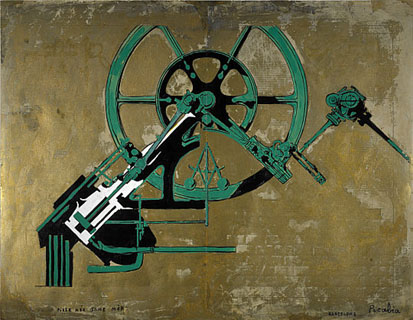“Duchamp Man Ray Picabia”, a new exhibition at Tate Modern, ostensibly tells the story of a friendship between three men through the work that they created. But its real subject is the transformation of twentieth-century art. Between them, Francis Picabia (1879-1953), Marcel Duchamp (1887-1968) and Man Ray (1890-1976) devised new forms of painting, photography, sculpture and performance. Theirs may have been a somewhat unequal collaboration, in which Duchamp played the most significant role, but it is true to say this triumvirate of aesthetic and intellectual radicals left almost no aspect of the visual arts as they had found it – ultimately demolishing the established idea of what a work of art actually is.
Picabia was above all a painter, Duchamp was above all a thinker and Man Ray was a bit of a jack-of-all-trades, who took photographs, painted, made films and created all kinds of Dada and Surrealist objects. Each came from very different backgrounds, in that Picabia was the immensely wealthy son of a Cuban-born Spanish aristocrat, while Duchamp’s father was a modest notary from
Duchamp and Picabia met in


